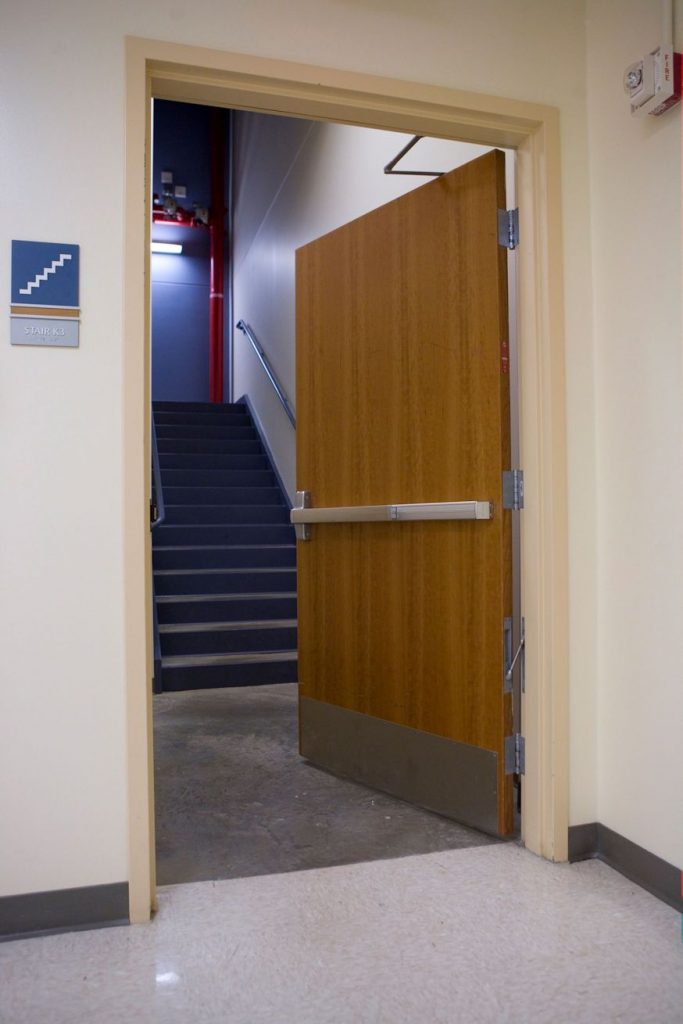 Egress doors are typically required to swing in the direction of egress when they’re serving an occupant load of 50 people or more, but there are a few other locations where doors are required to be outswinging even if they are serving a lower occupant load. There are also some situations where egress doors are not required to be swinging doors, and may be another type of door such as a horizontal sliding door or revolving door.
Egress doors are typically required to swing in the direction of egress when they’re serving an occupant load of 50 people or more, but there are a few other locations where doors are required to be outswinging even if they are serving a lower occupant load. There are also some situations where egress doors are not required to be swinging doors, and may be another type of door such as a horizontal sliding door or revolving door.
When an egress door swings into a corridor or another location where the door in the open position may reduce – or encroach upon – the width of the egress path, the limitations on encroachment must be met. For example, imagine a 4-foot wide corridor with a 3-foot door swinging into it. If the door is equipped with an overhead stop that stops the door at 90 degrees, it would almost completely block the corridor and could severely impact the means of egress and affect evacuation in an emergency.
There are two points within the door swing that are measured to determine compliance with the encroachment limitations – the position where the door encroaches most into the required egress width (usually 90 degrees), and the position of the door in its fully-open position (often 180 degrees, but not always). To learn more about door swing, calculating the required egress corridor width, and the limitations on the encroachment of a swinging door into the required egress width, read this Decoded article and then proceed to the review questions below.
~~~
Review Questions
1. What is the required door swing for a door between a fire-rated stair enclosure and a 4th-floor corridor serving 3 apartments with an occupant load of 6 people each?
- The IBC allows either an inswinging or outswinging door.
- NFPA 101 requires a door that swings into the exit enclosure.
- Both of the above statements are correct.
- None of the above
2. If a door installed in an alcove can only swing to 90 degrees, what is the maximum distance the door can project into the required corridor width when the door is fully open?
- 7 inches
- One-half of the required corridor width
- 12 inches
- 36 inches
3. If a door swinging into a corridor has a swing of 180 degrees, what is the maximum amount it can encroach upon a corridor at any time during its swing?
- 7 inches
- One-half of the required corridor width
- 12 inches
- 36 inches
Answers: 1 – C, 2 – A, 3 – B
